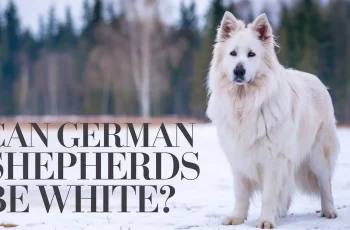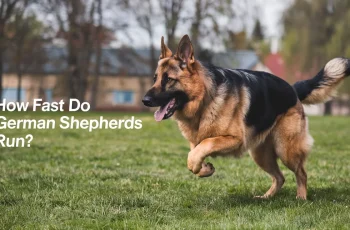Drawing a German Shepherd is a thrilling challenge for artists, thanks to their powerful physique, lush fur, and soulful expressions. These loyal dogs, known for their intelligence and versatility, make stunning subjects. Whether you’re a beginner or seasoned sketcher, this guide walks you through creating a realistic German Shepherd drawing with confidence and flair.

Step 1: Study Their Anatomy
German Shepherds boast a muscular, athletic build with a straight back, slightly sloped hindquarters, and a bushy, saber-like tail. Their heads are noble, with upright, V-shaped ears, almond-shaped eyes, and a broad nose. Study reference photos—standing, sitting, or running—to nail their proportions. Notice how their shoulders are strong, legs sturdy, and chest deep. Understanding these details ensures your sketch feels authentic and lifelike.
Step 2: Gather Your Materials
For a polished drawing, use quality tools: H pencils (like 2H) for light outlines, B pencils (2B, 4B) for bold shading, and a kneaded eraser for gentle corrections. Smooth paper, like Bristol, holds detail well. Grab blending stumps or cotton swabs for smooth gradients, and keep a sharpener handy. Optional colored pencils can add subtle tan or black tones later.
Step 3: Sketch Basic Shapes
Start with light, loose lines to map the structure. Draw a circle for the head, an oval for the torso, and smaller ovals for the upper and lower limbs. Add a smaller circle for the snout and lines to connect the body parts. Keep proportions in check: the body is about twice the head’s length. These shapes are your foundation, so don’t press hard—you’ll refine them soon.
Step 4: Draw the Face
The face is the heart of expression. Sketch almond-shaped eyes angled slightly upward for that alert look. Place the wide nose below, with a gentle curve for the muzzle. Add V-shaped ears pointing up, slightly tilted outward. Use reference photos to position features accurately—eyes too close or far apart can change the vibe. A slight brow line adds their signature intensity.
Step 5: Outline the Body
Refine your shapes into a detailed outline. Emphasize muscular shoulders, a defined chest, and strong legs. The hind legs angle back for that iconic slope. Draw the tail tapering to a point, bushy but sleek. Add paw details—four toes, slight curves—for realism. Keep lines fluid to capture the dog’s natural grace, erasing guide shapes as you go.
Step 6: Add Fur Texture
German Shepherds have medium-length, thick fur. Use short, quick pencil strokes, following the fur’s direction: downward on the back, outward on the legs, fuller around the neck and tail. Use H pencils for lighter, shorter fur (like the face), and B pencils for darker, denser areas (tail, saddle). Vary stroke length for a natural look—longer on the belly, choppy near joints.
Step 7: Shade for Depth
Shading brings your sketch to life. Apply darker tones (4B) around the eyes, ears, and underbelly for shadow, lighter ones (2H) on raised areas like the snout and back. Blend with a stump or swab for smooth transitions, keeping highlights crisp. Add depth to the coat by layering strokes—darker where fur overlaps, lighter where it catches light. Check your reference for contrast.
Step 8: Enhance Expression
The German Shepherd’s face conveys loyalty and smarts. Tilt the eyes upward for a friendly vibe, or keep them straight for a serious gaze. Curve the mouth slightly to suggest calm or alertness. Darken pupils with a glint of white for life, and shade the brow to emphasize focus. Small tweaks here make your dog feel real and emotive.
Step 9: Refine Details
Polish your work by sharpening contrasts—deepen shadows, brighten highlights with a kneaded eraser (like on the snout or eyes). Add fine fur details, like wisps around the ears or fluff on the tail. Check proportions: are the legs balanced? Is the head too big? Erase stray marks and smooth gradients for a clean finish. Step back to admire, then tweak as needed.
Step 10: Experiment with Poses
Once comfortable, try dynamic poses—sitting, trotting, or leaping. Study motion photos to capture stretched legs or a flowing tail. For a sitting pose, angle the hind legs under, tail curled. Running shows extended limbs, ears back. Vary angles—side profiles highlight their sleekness, three-quarter views add depth. Each pose builds your skill and keeps sketches fresh.
Tips for Success
- Practice Patience: Start with simple poses before tackling action shots.
- Use References: Photos guide accuracy in fur, lighting, and anatomy.
- Layer Gradually: Build shading slowly to avoid over-darkening.
- Enjoy Mistakes: Erasers exist—experiment freely to grow.
- Add Color (Optional): Subtle tan or black pencils can enhance realism, but keep it minimal.

Conclusion
Drawing a German Shepherd is a rewarding journey, blending technical skill with creative joy. By studying anatomy, using quality materials, and following these steps—shapes, outlines, fur, shading, and refinement—you’ll craft a lifelike portrait that captures their strength and spirit. Keep practicing, try new poses, and let each sketch reflect the breed’s noble charm. Grab your pencils and start sketching—your German Shepherd masterpiece awaits!



